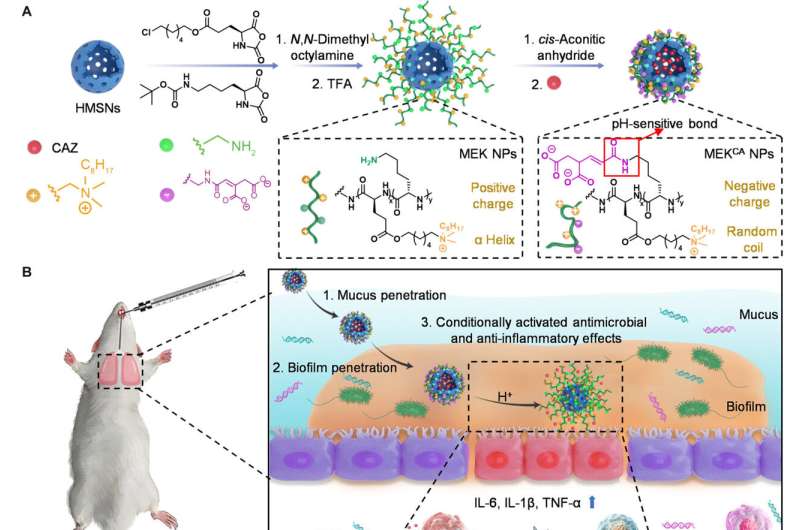
A team of nanochemists at Soochow University, in China, working with a colleague from Columbia University, in the U.S., has developed an inhalable antibacterial therapy carried by nanoparticles for treating patients with COPD. Their paper is published in the journal Science Advances.
Chronic obstructive pulmonary disease (COPD) is a condition in which airways in the lungs become progressively narrower and harder, resulting in obstruction of airflow. It also results in the creation of mucus, which tends to accumulate. Such accumulations often lead to bacterial infections.
Over the years, scientists have developed a host of therapies to treat symptoms that accompany COPD—the condition itself is considered to be incurable. Such therapies target symptoms of coughing, itchy or burning lungs and inflammation. And while many such therapies offer some degree of relief, few offer much in the way of treating bacterial infections. This is because antibiotics must pass through both a layer of mucus and the biofilms created by the bacteria. In this new effort, the research team created a therapy that may overcome this problem.
To kill bacteria in the lungs, a drug must be able to access it directly. The team started with a drug known to kill the types of bacteria that infect the lungs. They then encapsulated it in a hollow, silica-based nanoparticle made with a negatively charged polypeptide. This protected the antibiotic agent as it traveled through the mucus. The nanoparticle then made its way through biofilms via reactions between the polypeptide and acids in the biofilm, allowing it to fight the bacteria on the other side.
The team first tested their approach using cells in a petri dish. Finding success, they tested it with mouse models and found that it was able to both effectively fight bacteria and quiet an immune response, which led to reductions in inflammation. The researchers acknowledge that more testing is required, but also suggest that their technique holds promise for a paradigm shift in COPD management.

